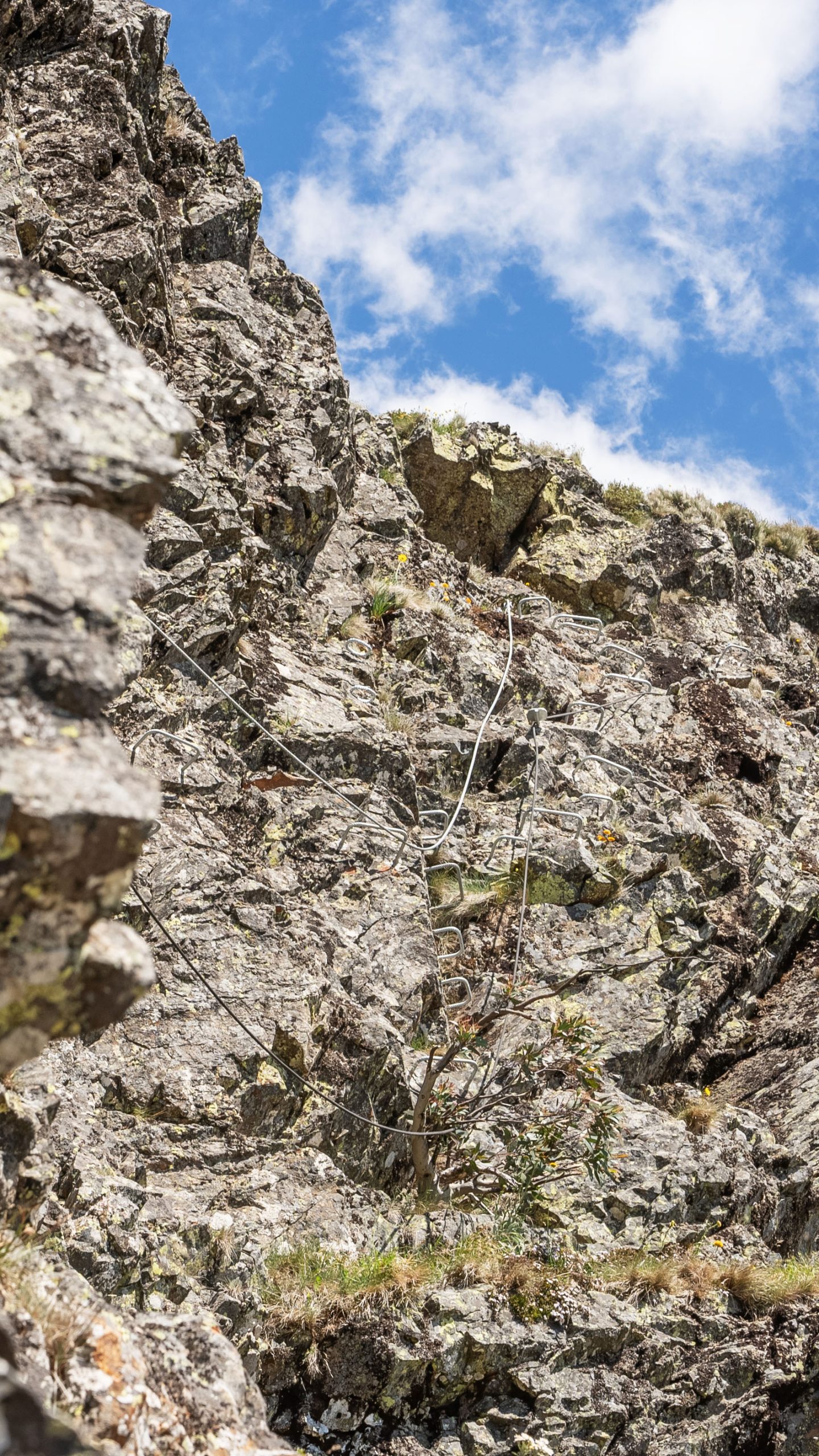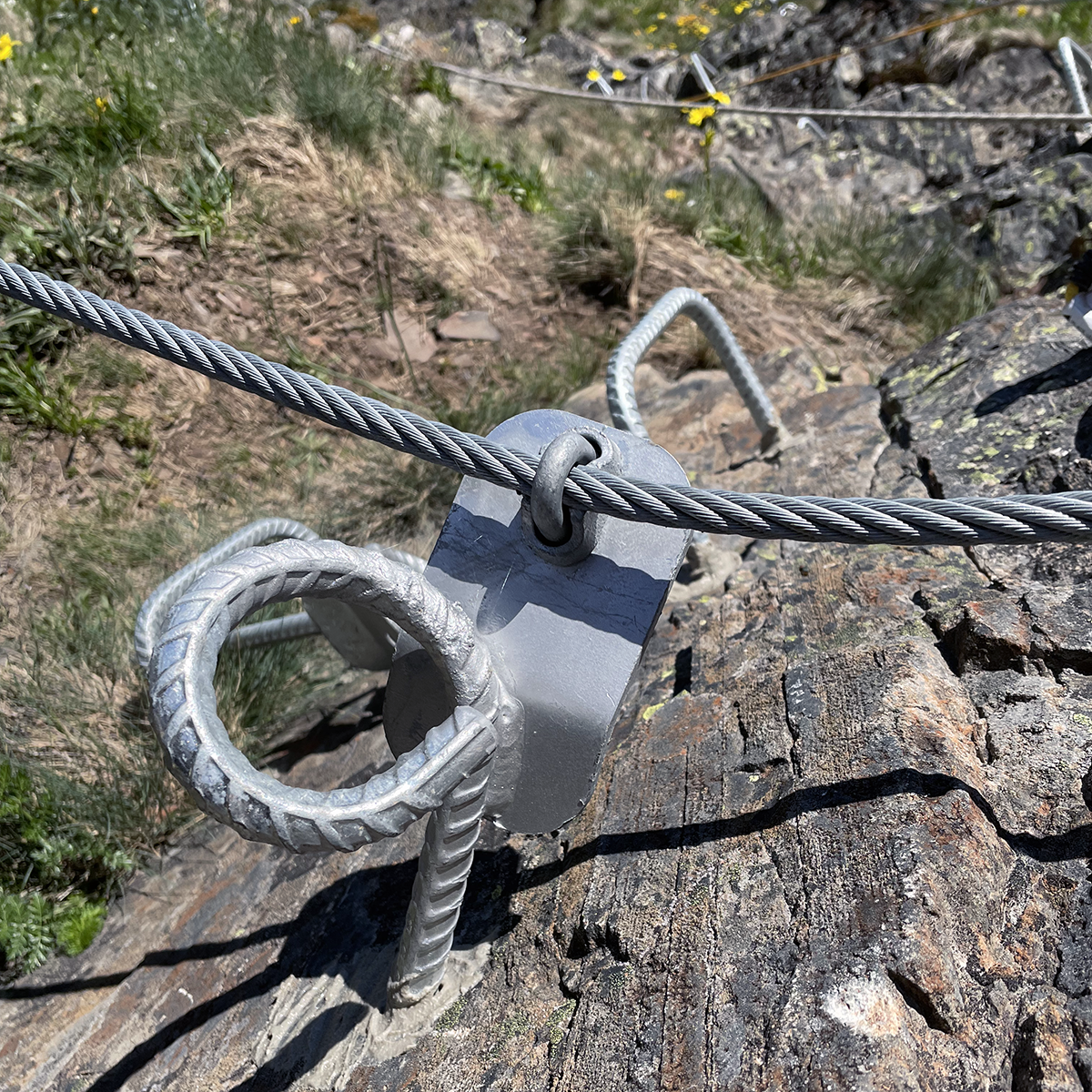Via Ferrata is a type of climbing that follows a set route where fixed equipment is installed into the rock to assist the participant in ascension. This fixed gear guarantees a higher margin of safety and grants access to anyone, regardless of experience.
For a climber, it literally is as simple as being able to climb a ladder – just with a great view to go along with it.
Think a tree-top high ropes course, but 1000m up on a mountain rock face!
Via Ferrata was born in the Italian Dolomites back in the 1880s, and then more widely installed during WWI to assist the Italian troops moving between Italy and Austria. Via in Italian means “the way” or path and Ferrata is Italian for “iron” (fe).
Since the World Wars, these via ferratas have been maintained and added to so recreationalists can enjoy them as well. Now there are hundreds of routes across Europe, particularly in Italy, France, Austria, Switzerland, Slovenia and Germany (where it’s called klettersteig).
Whistler, Canada was one of the first places to build a Via Ferrata in in North America, and now there are several dozen spread throughout America and Canada. Wanaka, New Zealand opened Wild Wire in 2016.
And now Australia gets its first Via Ferrata at Mount Buller – RockWire.
Participants wear a climbing harness and connect themselves to an iron cable via two specialised lanyards (elasticated webbing with carabiners attached to the ends). The cable is anchored into the rock every few metres, and whenever the climber arrives at the anchor, they remove the first lanyard from the wire (leaving themselves still connected to the cable by the second lanyard) and reattach it on the other side of the anchor.
Once safely connected again, they then remove the second lanyard and reattach it to the cable (as the first lanyard). Once both lanyards are connected to the cable past the anchor, the climber can then move on, repeating this process each time they arrive at an anchor.
RockWire, in collaboration with engineers and Kong Italy, have developed a continuous line system for our routes – meaning climbers are permanently attached to the cable.
Instead of removing the lanyards each time one reaches an anchor, participants simply slide past the anchor, eliminating the possibility of human error and increasing safety.
Making it perfect for beginners, first timers and school groups.


© 2024 All Rights Reserved.